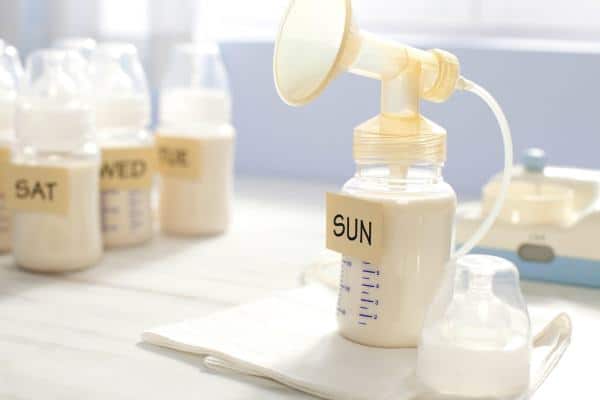If you are having a baby, one of the many things weighing on your mind may be the prospect of breastfeeding. Should you do it? Will it hurt? Will your breasts ever be the same? How exactly does a breast pump work?
One of the most common questions about breastfeeding is asked by moms who return to work soon after their baby is born. Many working mothers feel a real desire to breastfeed their babies, but wonder if it is just a pipe dream because maternity leave doesn’t last forever and baby needs new shoes, or so the saying goes.
Before you get too overwhelmed, just relax. Breastfeeding is a natural, normal process which provides your baby with the best milk possible.
Key Points
- Syncing your breastfeeding to a schedule will help you get the right amount of breastmilk for your baby.
- If you need to transition your baby to bottle feeding or formula, start enough in advance before going back to work.
- Breastfeeding is a perfectly natural and healthy part of motherhood, but it's okay if it isn't for you.
Breastfeeding 101
You are not a horrible mother if you choose not to breastfeed your child. There are many circumstances which might prevent it. However, if you want to nurse your baby, but are afraid you don’t fit the mold, read on. You may just find you do.
You do not have to be a dedicated stay-at-home mother to successfully provide your baby with breast milk. You do not have to devote every waking moment to pumping or feeding your baby either.
Breastfeeding is extremely flexible and will work with your schedule and dedication, given you know how to manipulate a few breastfeeding facts.
The Body’s Law of Supply and Demand
First off, breast milk is produced on a supply and demand system. In other words if you feed or pump a lot, your body will naturally create more milk for use. This is a very handy fact to manipulate, especially for the working mom who needs to pump her milk for daycare feedings.
Pair this fact with the next one and you are set.
When your milk comes in, you will probably be producing enough milk to provide bottles to the entire lower east side. Over the course of a few days, your body will figure out how much your baby is really using and cut back on the menu a bit.
Working the System
If you want to have enough milk to pump and store, then utilize the surplus extravaganza right from the start. Set aside a time, or several times, throughout the day when you will pump. Make certain you do not miss the scheduled pumping sessions or your body will make less milk the next day!
Your body doesn’t know it is feeding a pump as well as a baby; it will just keep making milk to meet the demand. By following a pumping schedule religiously you will find that you have a stockpile of breast milk ready in the freezer when the time comes to return to work.
Keep your work schedule in mind when setting up your pumping appointments at home. You will be much more likely to sustain successful pumping while working when the appointment times don’t change as you return to work.
Getting ahead feels good, and the frozen breast milk will come in handy when your baby starts day care. Keep in mind you don’t have to go all or nothing. Your baby can have a bottle or two of formula during the day to make the pumped milk last longer. Then, you can nurse at night when you get home from work as well.
Transitioning to Bottle Feeding
If you begin by breastfeeding your baby but know you'll need to bottle feed down the line, at some point you'll have to get your baby through that transition. Shifting your baby from breast to bottle is a process that takes some time. You'll want to start the transition a couple of weeks before you need your baby to bottle feed.
Start by choosing either a good formula or prepping enough breastmilk in advance. You're going to be mixing breastfeeding and bottle feeding for some time before shifting to exclusively bottle feeding. If you'll be using a formula, mix your breast milk with the formula as you transition your baby.
This will make it easier on your child's body. Over time, you'll use less breast milk and more formula, until you eventually phase out the breast milk entirely. It's best to do this process before you go back to work, so that you're able to focus on your baby. You don't want to be juggling another challenge while trying to adjust to going back to work.
Breastfeeding, even if you're a working mom, is nothing to be scared of or stressed about. It's a natural part of motherhood, and one that many mothers find themselves enjoying. It gives you an opportunity to bond with your child in a truly special way. By doing a little preparation, you'll be able to continue feeding your baby however you want after you go back to work.
